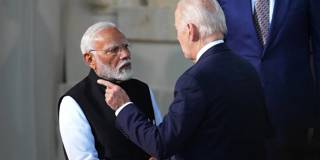Since the Ukraine war began, India has struggled to strike a balance between its longstanding relationship with Russia and its deepening ties with the US. But Indian diplomacy could score a geopolitical triumph if it positions Prime Minister Narendra Modi’s upcoming visit to Ukraine as a bold new peace initiative.
NEW DELHI – Indian Prime Minister Narendra Modi reportedly plans to visit Ukraine in late August, a little over a month after his controversial meeting with Russian President Vladimir Putin in Moscow, which coincided with NATO’s summit in Washington. Images of Modi hugging Putin – on the same day that Russia bombed a children’s hospital in Kyiv and killed at least 42 civilians in air strikes across Ukraine – provoked widespread outrage. Ukrainian President Volodymyr Zelensky called it “a huge disappointment and a devastating blow to peace efforts to see the leader of the world’s largest democracy hug the world’s most bloody criminal in Moscow on such a day.”

NEW DELHI – Indian Prime Minister Narendra Modi reportedly plans to visit Ukraine in late August, a little over a month after his controversial meeting with Russian President Vladimir Putin in Moscow, which coincided with NATO’s summit in Washington. Images of Modi hugging Putin – on the same day that Russia bombed a children’s hospital in Kyiv and killed at least 42 civilians in air strikes across Ukraine – provoked widespread outrage. Ukrainian President Volodymyr Zelensky called it “a huge disappointment and a devastating blow to peace efforts to see the leader of the world’s largest democracy hug the world’s most bloody criminal in Moscow on such a day.”